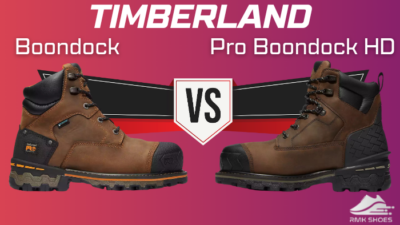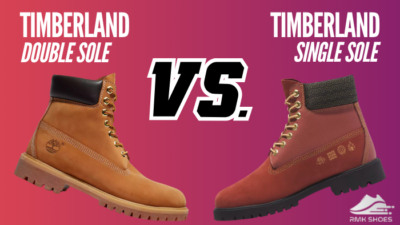Finding the optimal blend of cushion and performance to fuel miles can be an endless chase. As a dedicated runner who logs 40+ miles weekly, models from Swiss shoe engineer On Running frequently catch my eye for their smooth rides.
The Cloudflyer and Cloudrunner are two of their most sought-after neutral trainers.
After taking both for numerous test runs, I cut through the marketing buzzwords to directly compare areas like ground feel, versatility, and durability.
Whether you want protective padding or more excellent road connectivity, read on to learn if the Cloudtec-focused Cloudflyer or Cloudrunner finishes first.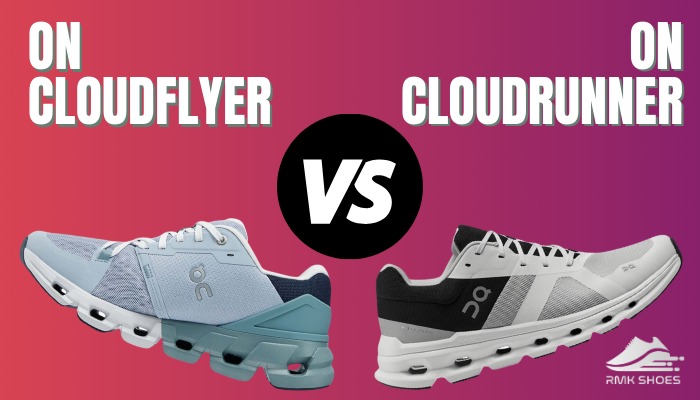
Therefore, let’s begin.
Overview of On Running Cloudrunner and Cloudflyer
On Running, a well-known name in the running shoe industry has unveiled two impressive models in 2022 – the Cloudrunner and the Cloudflyer. Each shoe is tailored to specific running requirements, offering distinct features to elevate your running experience.
On Cloudrunner
The On Cloudrunner is perfect for daily training, recovery runs, and medium distances. It costs $150 and prioritizes breathability, keeping your feet cool and dry throughout runs.
Designed for maximum support, it’s an excellent choice for runners needing extra stability.
The CloudTec® sole, with a wider base and more prominent cloud elements, enhances stability and shock absorption, especially beneficial for overpronating runners.
On Cloudflyer
The Cloudflyer is ideal for long runs, recovery runs, and even walking. Priced at $170, it offers moderate breathability for comfortable foot conditions.
While it provides good support, its main focus is on a balanced, cushioned ride. Featuring a dual-density midsole with CloudTec® technology and a wider platform, it ensures softer landings and a more responsive feel during runs.
Having covered the On Cloudrunner and Cloudflyer, let’s now jump into a comprehensive analysis of their features.
Feature Comparison of On Cloudrunner and Cloudflyer 4
If you’re looking for a supportive, cushioned running shoe for your daily runs or longer distances, the On Cloudrunner and Cloudflyer 4 are great choices. However, they each address slightly different perspectives.
To aid in determining which shoe suits you best, let’s check the feature comparison of ON Cloudrunner and ON Cloudflyer 4:
| Feature | ON Cloudrunner | ON Cloudflyer 4 |
|---|---|---|
| Release Year | 2022 | 2022 |
| Upper Materials | Breathable comfortable engineered mesh upper, with overlays | Engineered mesh with rubber overlays on the toe box and synthetic close-off materials in the rear portion of the shoe |
| Midsole | CloudTec® cushioning with ultralight Zero-Gravity foam | Bigger dual-density CloudTec®, Zero-Gravity foam |
| Cushioning | Moderate | Plush & Comfortable |
| Forward Propulsive Technologies | Swiss-engineered Speedboard | Incorporated Speedboard® for next-gen speed |
| Outsole | Strategically placed durable rubber over the pods | Durable rubber over the pods |
| Weight | 10.6 ounces (300 g) | 10.6 ounces (300 g) |
| Stack Height | Heel 30 mm, and Toe 21 mm | Heel 29 mm, and Toe 18 mm |
| Drop | 9 mm | 11 mm |
| Breathability | Superior | Moderate |
| Arch Support | Good | Better |
| Size | True to size, available wide model | True to size, available wide model |
| Fit | Spacious fit | Comfortable fit, with medium-toe box |
| Price | $150 | $170 |
| Recycled Materials | 30-35% of the total build | 25-30% of the entire build |
| Best For | Daily training, recovery runs, medium distances | Long runs, stable daily training, recovery runs, walking |
Now that we’ve examined On Cloudrunner and Cloudflyer 4 in detail. Let’s explore their key distinctions further.
Primary Differences between On Cloudflyer 4 and Cloudrunner
The Cloudflyer and Cloudrunner share the same Cloudtec DNA and overall versatility in the On lineup.
However, when taking a closer look, the differences in ride and feel emerge between these two models. I break down the key distinguishing traits, including cushioning responsiveness, weight, grip, and intended terrain, that set the Cloudflyer 4 and Cloudrunner apart.
Here are the main differences between On Cloudflyer 4 and On Cloudrunner:
1. Upper Materials and Quality
The Cloudflyer 4 uses an engineered mesh with rubber overlays. Its design includes reinforced rubber overlays on the toe box for toughness and safeguarding. Synthetic materials in the rear portion offer stability and support.
In contrast, the Cloudrunner flaunts an engineered mesh upper, prioritizing breathability. The strategic overlays enhance the structure and fit while facilitating airflow for a cool feel during sunny days.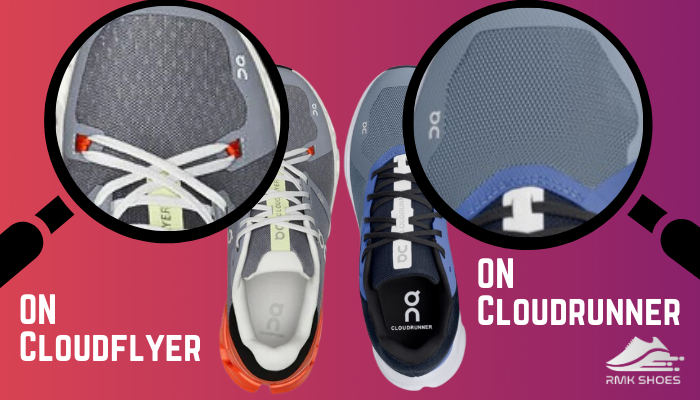
Moreover, the ON Cloudflyer 4 and Cloudrunner integrate recycled materials into their construction.
The Cloudflyer 4 boasts around 25-30% recycled content of the total build, with 85-90% of polyester being recycled.
Meanwhile, the Cloudrunner incorporates roughly 30-35% recycled content, with 90-95% of polyester being recycled.
These initiatives align with sustainability goals, and manufacturing occurs at Dean Shoes in Vietnam.
In my experience, I observed the Cloudflyer 4’s upper to be sturdier, especially around the toe area. That doesn’t mean they are uncomfortable. Conversely, the Cloudrunner’s upper felt more breathable and comfortable, particularly on longer runs.
The upper material of the Cloudflyer 4 is quite pleasing, and it offers support and comfort. But the breathability feature of the Cloudrunner is exceptional.
2. Design Variations
The Cloudflyer 4 sports a modern, streamlined look, emphasizing a dynamic and sporty vibe. Its sleek design, characterized by bold lines and sharp angles, exudes speed and agility.
Conversely, the Cloudrunner opts for a rugged, sturdy appearance, prioritizing durability and support. Its design features robust contours, projecting a tough and resilient demeanor.
In my experience, the Cloudflyer 4 feels agile and swift, thanks to its sleek profile, while the Cloudrunner emanates strength and reliability with its sturdy build.
I found the Cloudflyer 4’s aesthetic particularly appealing.
3. Midsole Innovations
The midsoles of the On Cloudflyer 4 and Cloudrunner are engineered with distinct technologies to elevate your running journey.
In the Cloudflyer 4, you get a dual-density CloudTec® setup featuring larger pods compared to the Cloudrunner. This configuration delivers a plush, supportive feel, perfect for enduring high-impact activities or covering long distances.
I particularly appreciated this cushioning on lengthier runs, where my feet benefited from the extra shock absorption.
Additionally, the midsole integrates Zero-Gravity foam for its lightweight, responsive cushioning.
On the other hand, the Cloudrunner opts for a lighter, simpler approach. Its CloudTec® pods offer a softer, more flexible ride. The ultralight Zero-Gravity foam adds a springy, energetic feel, ideal for daily runs and walks where comfort and versatility are paramount.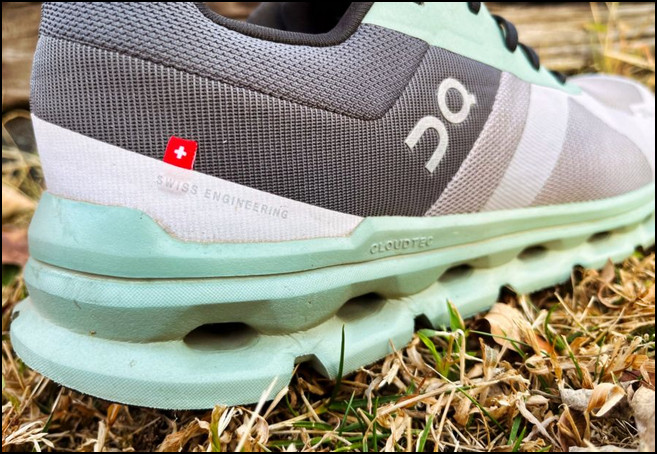
When it comes to my daily runs and training sessions, the Cloudrunner is my go-to choice. However, when I tackle longer runs or embark on distance walks, I switch to the Cloudflyer 4 for its enhanced support and comfort.
4. Outsole Traction
The Cloudflyer 4 is equipped with a robust rubber outsole featuring strategically placed pods covered with rubber. This setup ensures exceptional grip and durability on diverse surfaces, from pavements to light trails.
In contrast, the Cloudrunner employs a strategically designed rubber outsole with pods.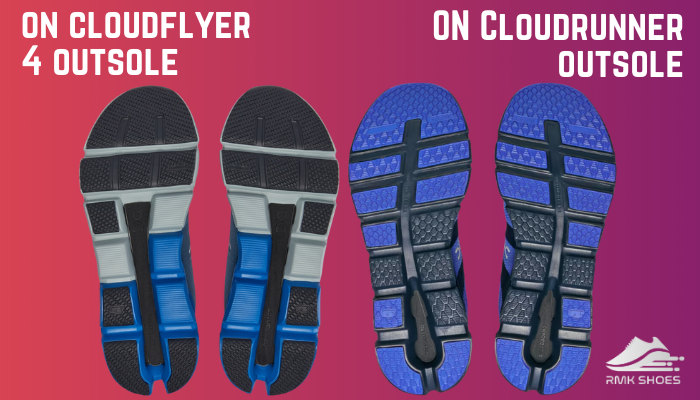
Its multi-directional tread patterns enhance control and traction across various terrains, fostering confident running and improved grip. Especially during quick changes in direction or on slippery surfaces.
Based on my personal experience, while the Cloudflyer 4 delivers a stable grip on both dry and wet surfaces, the Cloudrunner’s multi-directional tread patterns excel in offering superior control on uneven terrains.
5. Comfort and Cushioning
When it comes to comfort and cushioning, both the Cloudflyer 4 and Cloudrunner prioritize delivering a plush and supportive experience for runners.
The Cloudflyer 4 achieves exceptional cushioning through its Helion™ superfoam midsole, providing a soft yet responsive ride.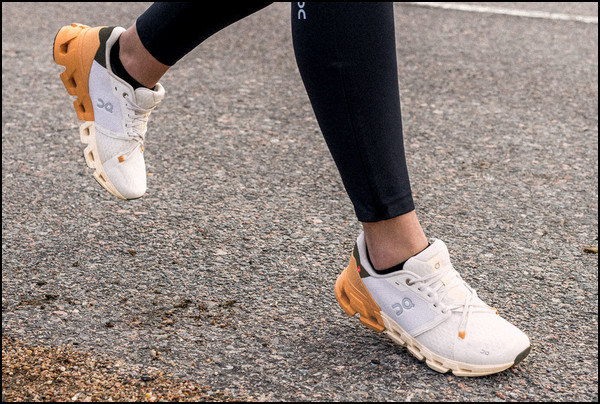
What sets the Cloudflyer 4 apart is the difference in density between the medial and lateral clouds. The medial clouds have a firmer density, offering stability during landings and transitions, while the lateral clouds provide a softer feel for a cushioned ride.
Additionally, the Cloudflyer 4’s wider fit also caters to various foot shapes, enhancing overall comfort.
On the flip side, the Cloudrunner focuses on comfort with its ultra-light zero-gravity foam midsole, engineered to make every run feel effortless.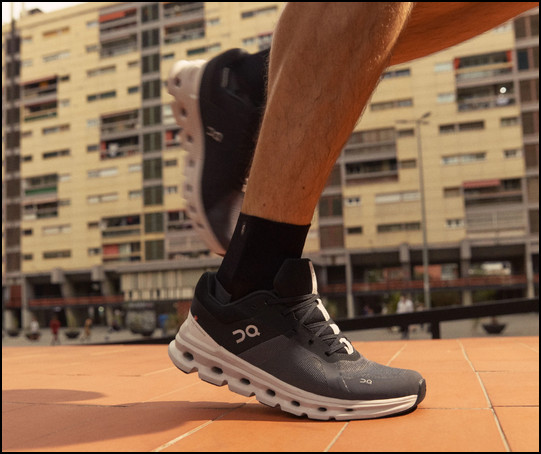
Its supportive structure, ample cushioning, and wider Speedboard for added stability ensure a smooth and comfortable ride for new runners and those seeking extra support.
In summary, both shoes provide runners with superior comfort and cushioning tailored to their unique preferences and needs.
Comfort-wise Cloudflyer 4 is a clear winner for me. It has enhanced cushioning almost on every corner. But The tongue of the Cloudrunner is more padded.
6. Performance Evaluation
The Cloudflyer 4 is crafted to deliver ample cushioning and stability, ideal for longer runs. With ON’s CloudTec cushioning technology, it ensures a plush and cozy feel, absorbing impact and providing a gentle landing to reduce fatigue during extended runs.
If you need a shoe that has better breathability compared to Cloudflyer 4, you can check the Cloudflow vs Cloudflyer.
Moreover, stability features are integrated to boost support and mitigate overpronation.
Conversely, the Cloudrunner also supports longer runs with a nuanced approach. While it offers commendable support, it excels in tempo runs or accelerating your pace. Balancing cushioning and stability, the Cloudrunner prioritizes a well-rounded running experience.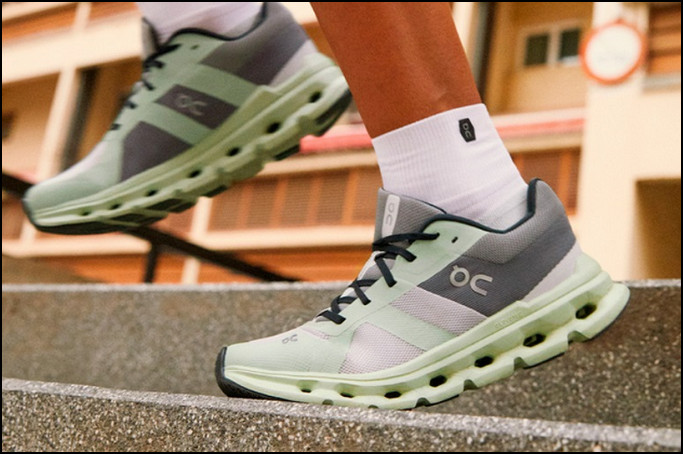
For those prone to inward foot rolling (pronation), the Cloudflyer 4 excels with its inherent support, guiding your foot through each stride for stability and alignment.
While the Cloudrunner provides adequate stability, it might fall short for runners seeking substantial correction.
7. Weight and Fit
Regarding weight, the On Cloudflyer 4 and Cloudrunner weigh 10.6 ounces, making them equally lightweight for runners. But, in real-life usage, the perceived weight might vary slightly due to differences in weight distribution.
That being said, the fit of each shoe varies to accommodate different preferences and needs.
In my experience, the Cloudflyer 4 offers a snug fit with ample room in the toe box for toe splay during longer runs. Its plush tongue enhances overall comfort, although some may find the thin laces less supportive.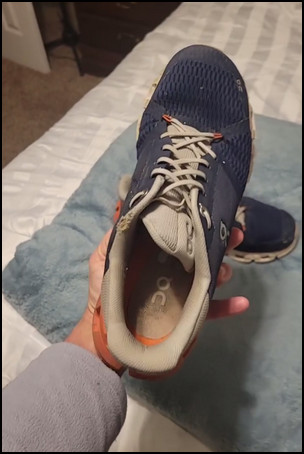
On the flip side, the Cloudrunner boasts a wider fit, providing a more comfortable option for slightly wider feet. The padded heel and tongue provide extra cushioning plus support, while the airy mesh top allows for proper breathability.
Cloudrunner provides stable arch support but if you need neutral arch support then check the comparison between Cloudrunner and Cloudswift.
Overall, Cloudflyer 4 leans towards a snugger and plush fit, while the Cloudrunner provides a roomier option for those pursuing further room and comfort.
8. Size Differences
Both the Cloudflyer 4 and Cloudrunner provide a true-to-size fit, ensuring comfort for most runners. Yet, there are nuances to keep in mind when selecting your ideal size.
The Cloudflyer 4 leans towards a slightly roomier fit than the Cloudrunner. Sticking to your regular size might suffice, but if you have wider feet or favor a looser feel, opting for a half size up could offer the perfect fit.
I have a friend who appreciates the Cloudflyer 4 for its broader toe box, which impeccably suits his slightly wider feet.
In contrast, the Cloudrunner offers a snugger, more secure fit. While this design enhances stability and support, individuals with wider feet or who prefer roomier shoes may find going up half a size beneficial.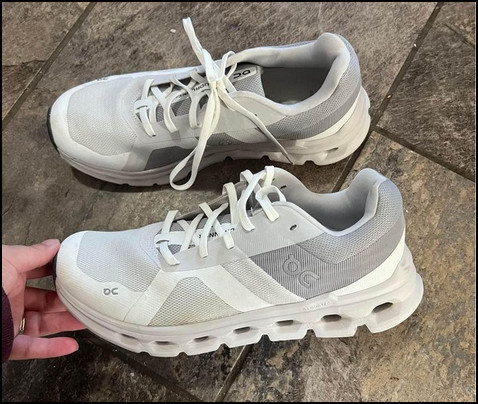
9. Price and Value Proposition
The Cloudflyer 4 comes with a slightly higher price tag, priced at around $170, compared to the Cloudrunner’s $150. If you’re watching your budget closely, the Cloudrunner might catch your eye with its lower cost.
However, price isn’t the only factor to consider, is it?
The Cloudflyer 4 offers additional features that the Cloudrunner doesn’t, such as a thicker, more cushioned sole and a more supportive upper. This could be a significant advantage if you seek a shoe that delivers the utmost comfort and stability during long runs.
Benefits and Drawbacks of ON Running Cloudflyer 4 and Cloudrunner
Selecting the perfect On shoe can be challenging because the Cloudrunner and Cloudflyer 4 offer exceptional comfort and support. However, identifying their specific advantages and disadvantages can help you in narrowing down your choices to fit your conditions.
Here are the pros and cons of On’s Cloudflyer 4 and Cloudrunner:
Cloudflyer 4
- »Excellent cushioning for a comfortable and responsive ride.
- »Provides stability and support, making it suitable for runners with overpronation.
- »Durable construction ensures long-lasting performance.
- »Versatile shoe for running, training, recovery, and walking.
- »The star-lacing system provides personalization.
- »Moderate breathability compared to Cloudrunner.
- »Priced at $170, making it a higher-end option.
Cloudrunner
- »Superior breathability keeps your feet cool and dry during runs.
- »Maximum support and stability for runners who require extra assistance.
- »Enhanced shock absorption and a wider base provide a cushioned and stable ride.
- »Suitable for daily training, recovery runs, and medium distances.
- »Cheaper than Cloudflyer 4.
- »Use more recycled materials compared to Clouflyer.
- »The shoe’s design may not be as versatile for different running styles.
- »Less plush compared to Clouflyer 4.
On Cloudflyer 4 vs Cloudrunner: Which is the Best for You?
After carefully considering the features and benefits of the ON Cloudflyer 4 and Cloudrunner, the Cloudflyer 4 is a clear winner for most runners.
The Cloudflyer 4 excels in cushioning, stability, and durability, catering to various running styles and distances.
Its balanced and cushioned ride, dual-density midsole, and wider platform ensure a softer landing and enhanced responsiveness. Also, its versatility extends to long runs, stable daily training, recovery runs, and walking.
Cloudrunner offers superior breathability and maximum support for overpronators.
Furthermore, Cloudrunner comes at a lower price, but the Cloudflyer 4’s overall performance and adaptability make it the preferred choice.
Whether you’re an expert athlete or simply starting out, the ON Cloudflyer 4 is a reliable and comfortable option.
FAQs
Do the Cloudflyer 4 and Cloudrunner provide support for overpronation?
Yes, both models support overpronators, with the Cloudrunner offering maximum support specifically for this foot type. Though Cloudflyer 4 is a cushioned running shoe, you can expect some support for overpronation.
What is the main difference between the Cloudflyer 4 and Cloudrunner?
The Cloudflyer 4 and Cloudrunner differ mainly in function. The Cloudflyer 4 delivers a well-balanced and well-cushioned running experience. At the same time, the Cloudrunner is specially designed to provide maximum support for overpronators.
Which is better for long-distance running, the Cloudflyer 4 or Cloudrunner?
With its exceptional cushioning, stability, and versatility, the Cloudflyer 4 excels as a long-distance running shoe. If you seek a well-rounded and dependable footwear option, then Cloudflyer 4 is ideal.
Which shoe has better breathability, the Cloudflyer 4 or the Cloudrunner?
While the Cloudflyer 4 has better comfort, the Cloudrunner offers superior breathability, ensuring your feet stay cool and dry during your runs. Also, Cloudrunner is one of the most breathable shoes of On Running.

